
Heteropteryx is a monotypic genus of stick insects containing Heteropteryx dilatata as the only described species. and gives its name to the family of the Heteropterygidae. Their only species may be known as jungle nymph, Malaysian stick insect, Malaysian wood nymph, Malayan jungle nymph, or Malayan wood nymph and because of their size it is commonly kept in zoological institutions and private terrariums of insect lovers. It originates from the Malay Archipelago and is nocturnal.

Heteropterygini is the only tribe within the subfamily of the Heteropteryginae. With 19 representatives described, this subfamily includes the fewest species of the three subfamilies, but includes the largest and most striking species of the family.
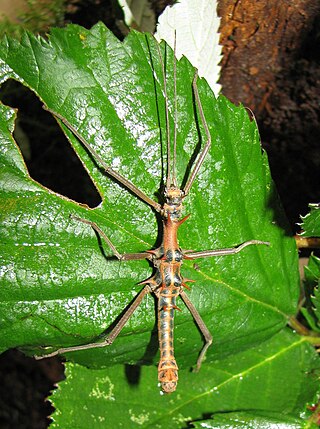
Epidares nolimetangere, the touch-me-not stick insect, is an insect species from the order of the Phasmatodea and the only representative of the genus Epidares. The species name nolimetangere comes from Latin and means "don't touch me". It refers to the prickly appearance of the animals.

Hoploclonia is the only genus of the tribe Hoplocloniini and brings together relatively small and darkly coloured Phasmatodea species.
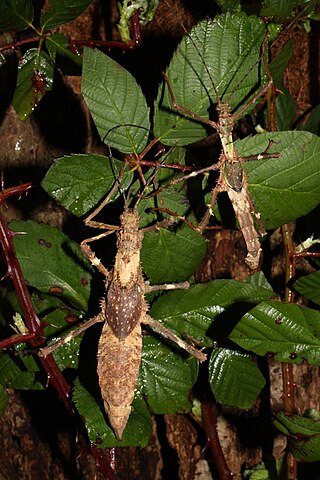
Haaniella is a genus of the Phasmatodea family Heteropterygidae from Southeast Asia.
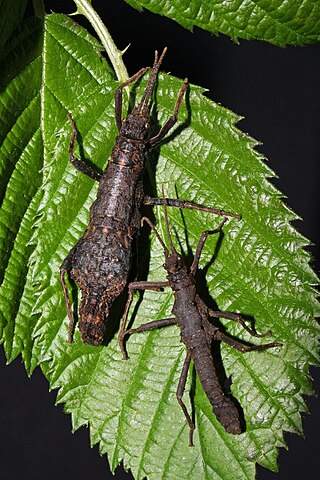
Dares murudensis is a relatively small species of stick insect. Like most other members of the genus Dares, the species is native to Borneo.

Dares philippinensis is a species of stick insects. This species is not native to Borneo like most other members of the genus Dares, but to the Philippine island Palawan.

Dares verrucosus is a species of stick insects. Like most other members of the genus Dares, the species is native to Borneo, more precisely in the north of the island.

Dares validispinus is a species of stick insects. Like most other members of the genus Dares, the species is native to Borneo, more precisely in the northwest of the island.

Dares ulula is a species of stick insects. Like most other members of the genus Dares, the species is native to Borneo, more precisely in the northwest of the island. The males are extremely prickly even for the representatives of the genus Orestes. Females are colored with a relatively high contrast.
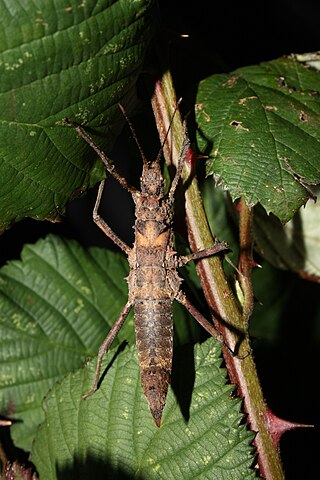
Hoploclonia cuspidata is a stick insect species native to the north of Borneo and is also called Brunei Hoploclonia stick insect.

Hoploclonia gecko is a relatively small, spiny and darkly colored stick insect species that is native to the northwest of Borneo.
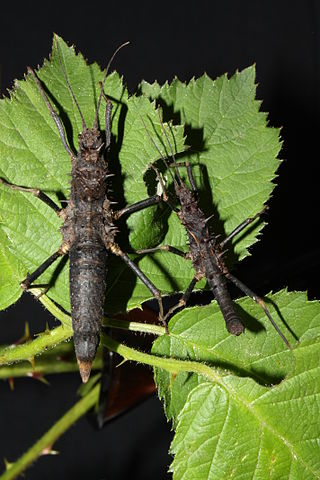
Hoploclonia abercrombiei is a stick insect species known from the northwest of Borneo, more precisely from only one place in the Malay state Sarawak.
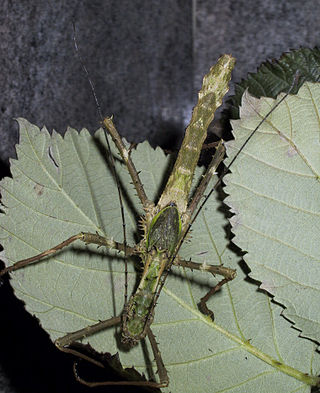
Haaniella erringtoniae is a stick insect species. It is a typical representative of the subfamily Heteropteryginae. The occasionally used common name Errington's Haaniella refers to the species name.
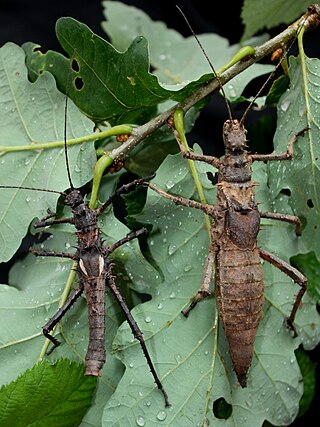
Haaniella dehaanii is a stick insect species. It is a typical representative of the subfamily Heteropteryginae. The occasionally used common name De Haan's haaniella refers to the species name.
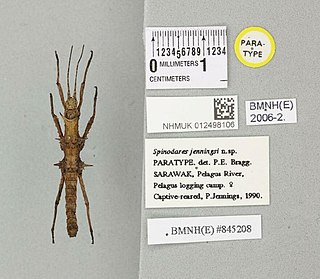
Spinodares is a monotypic stick insect genus endemic to Borneo, containing Spinodares jenningsi as the only valid species.

Haaniella scabra is a species of stick insect native to Borneo and a typical representative of the subfamily Heteropteryginae. The occasionally used common name Small Haaniella refers to the size of this.

Haaniella saussurei is a species of stick insect native to Borneo and a typical representative of the subfamily Heteropteryginae. The occasionally used common name Saussure's Haaniella refers to the species name.
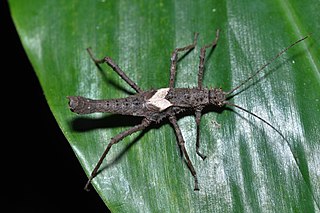
Haaniella parva is a species of stick insect from the subfamily Heteropteryginae and belongs to the representatives of the genus Haaniella native to Sumatra. It is their smallest representative.

Haaniella echinata is a stick insect species that is native to the entire north of Borneo. After Haaniella scabra, it is the representative of the genus Haaniella that inhabits the highest biotopes on Borneo.



























